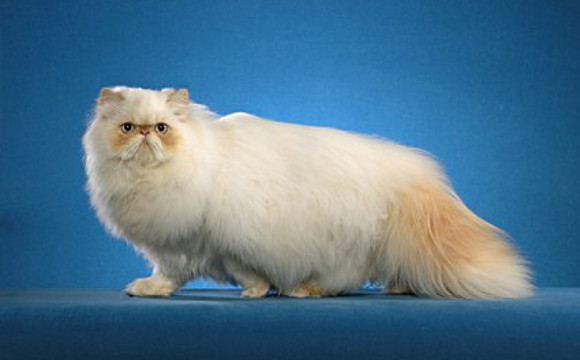Introduction
The Himalayan cat, a beloved breed among cat enthusiasts, is known for its striking appearance and affectionate nature. This guide delves into the history, characteristics, care needs, and common concerns associated with Himalayan cats. Perfect for potential cat owners and enthusiasts alike, this article provides a thorough understanding of this unique breed.
History of the Himalayan Cat
The Himalayan cat breed has an intriguing history, beginning with the first deliberate crossbreeding of a Siamese and a Persian in 1924 by a Swedish geneticist. This experiment aimed to understand genetic inheritance rather than creating a new breed. The real breakthrough occurred in the early 1930s at Harvard, where medical employees crossed a Siamese female with a black Persian male, producing black, shorthaired kittens. Subsequent breedings revealed that long hair and the colorpoint pattern are recessive traits, leading to the birth of Debutante, a cat with a Siamese body type and long Persian hair.
World War II interrupted breeding programs, but by 1950, American breeder Marguerita Goforth successfully created the first recognized Himalayan. The breed was named after the color pattern found in Himalayan rabbits. By 1957, major U.S. cat associations recognized the breed. Meanwhile, British breeders were also working towards similar goals, with the Governing Council of the Cat Fancy recognizing the breed as Colorpoint Longhair in 1955.
In 1984, the Cat Fanciers’ Association (CFA) merged the Himalayan and Persian breeds, citing similar body types and the need for occasional outcrossing to preserve the breed. This decision sparked controversy among breeders, leading to the formation of the National Cat Fanciers Association (NCFA) by those who disagreed.
Characteristics of Himalayan Cats
Himalayan cats are cherished for their gentle and calm demeanor. They are affectionate and playful, enjoying activities such as fetch. Unlike the more demanding breeds, Himalayans are docile and do not aggressively seek attention. They are quieter than Siamese cats but more vocal than Persians.
Physical Traits
- Body Type: Himalayans share the cobby body type of Persians.
- Coat: They have a long, luxurious coat that requires regular grooming.
- Face: The breed has evolved to include both the traditional “Doll Face” and the more extreme facial type. The latter has sparked concerns over potential health issues like breathing problems and dental malocclusions.
Care and Maintenance
Owning a Himalayan cat involves a significant commitment to grooming due to their long fur, which can mat and tangle easily. Daily brushing is recommended to keep their coat in top condition and prevent hairballs. Regular bathing is also advised to maintain cleanliness and health.
Health Concerns
Himalayan cats, particularly those with the extreme facial type, can suffer from several health issues:
- Breathing Problems: The flat face can lead to respiratory issues.
- Dental Issues: Malocclusions are common due to the shape of their jaw.
- Birthing Difficulties: The breed can face complications during birth.
It is essential for potential owners to be aware of these issues and choose reputable breeders who prioritize health over appearance.
Temperament and Behavior
Himalayan cats are known for their affectionate and loyal nature. They form strong bonds with their owners and enjoy interactive play. Despite their playful side, they appreciate a calm and stable environment. They are good with children and other pets, making them ideal family companions.
Activity Levels
- Playfulness: High
- Need for Attention: High
- Affection: High
- Docility: High
- Vocalization: Low to Moderate
- Intelligence: Moderate
- Independence: Moderate
Choosing a Himalayan Cat
When selecting a Himalayan cat, it is crucial to consider the source. Reputable breeders will provide health guarantees and documentation of the cat’s lineage. Adoption from shelters or rescue organizations is also a noble choice, offering a home to a cat in need.
Checklist for Potential Owners
- Grooming Commitment: Be prepared for daily grooming and regular bathing.
- Health Awareness: Understand potential health issues and ensure regular veterinary check-ups.
- Environment: Provide a calm, stable, and safe environment for the cat.
- Affection: Be ready to offer plenty of affection and interaction.
Conclusion
The Himalayan cat is a delightful addition to any home, known for its beauty, gentle nature, and playful demeanor. However, potential owners must be prepared for the grooming needs and health considerations that come with this breed. By understanding these aspects, owners can ensure a happy and healthy life for their Himalayan companion.
For more detailed information and guidance on Himalayan cats, visit Cat Place’s article on the Himalayan Cat Breed.

